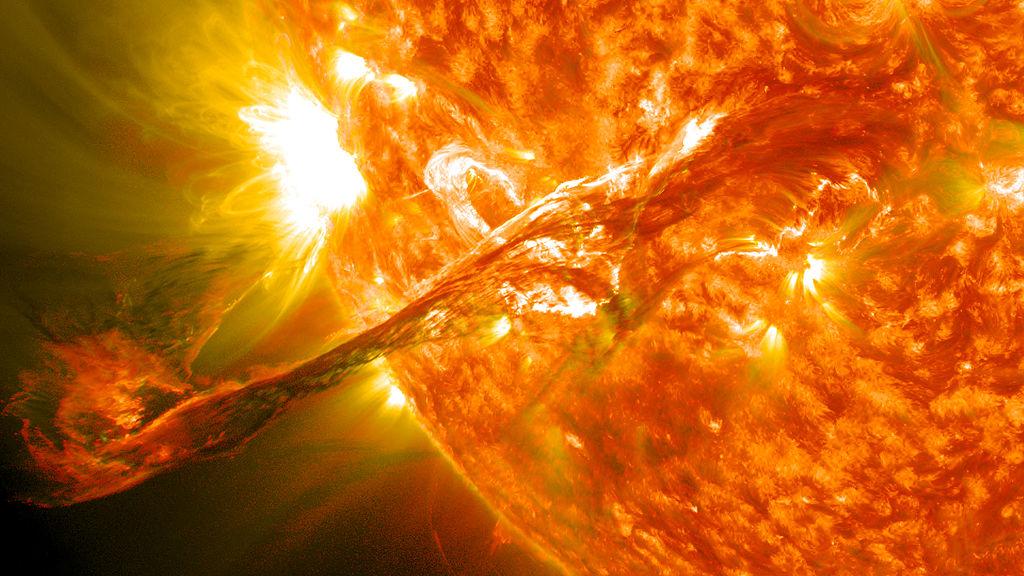Air travel today is extraordinarily safe. Despite the high profile downings of MH370 and MH17, aviation magazine Flightglobal found 2014 to be the safest year ever for air travel. But natural events, such as the Icelandic volcanic eruption and ash cloud in 2011, can sometimes pose unexpected but critical questions for air safety.
Solar storms now feature alongside volcanic eruptions on the U.K. national risk register and are at least as difficult to predict. The most dramatic storm on record, the Carrington event of 1859, caused ground level magnetic measurements to go off-scale. It occurred before air travel existed, but still damaged electrical and telegraph equipment on the ground. What risk would such an event pose for aircraft and their passengers?
Solar Fireworks
Explosions on the sun’s surface, called solar flares, are common. On average, one such event per year will emit a burst of very energetic protons. These are the same positively charged particles as those used in the Large Hadron Collider’s experiments. Such high-energy proton surges can last for several hours and there is no way of predicting them. Neither is there any warning as the particles travel close to the speed of light.
